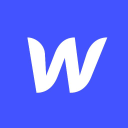We Hit $2K MRR in Just Two Months With Our AI Chrome Extension for Google Meet
Hello! Who are you and what business did you start?
Hey everyone! My name is Ruslan Halilov and I’m one of the co-founders of Bluedot. We are building an AI Chrome extension for Google Meet. It writes notes during the meetings, so you can focus on the conversation rather than scribing.
Unlike 99% of other tools on the market, we don’t have any bot /assistants joining your calls. Instead, Bluedot seamlessly captures your Google Meet using our Chrome extension and immediately generates notes adapted to your needs. Our customers are founders, solopreneurs, and freelancers.
We launched two months ago and currently have 500 daily active users. Additionally, we have a $1.5K MRR, with a 50% monthly growth rate.

What's your backstory and how did you come up with the idea?
My background was in Recruitment &...

Download the report and join our email newsletter packed with business ideas and money-making opportunities, backed by real-life case studies.

Download the report and join our email newsletter packed with business ideas and money-making opportunities, backed by real-life case studies.

Download the report and join our email newsletter packed with business ideas and money-making opportunities, backed by real-life case studies.

Download the report and join our email newsletter packed with business ideas and money-making opportunities, backed by real-life case studies.

Download the report and join our email newsletter packed with business ideas and money-making opportunities, backed by real-life case studies.

Download the report and join our email newsletter packed with business ideas and money-making opportunities, backed by real-life case studies.

Download the report and join our email newsletter packed with business ideas and money-making opportunities, backed by real-life case studies.

Download the report and join our email newsletter packed with business ideas and money-making opportunities, backed by real-life case studies.
































